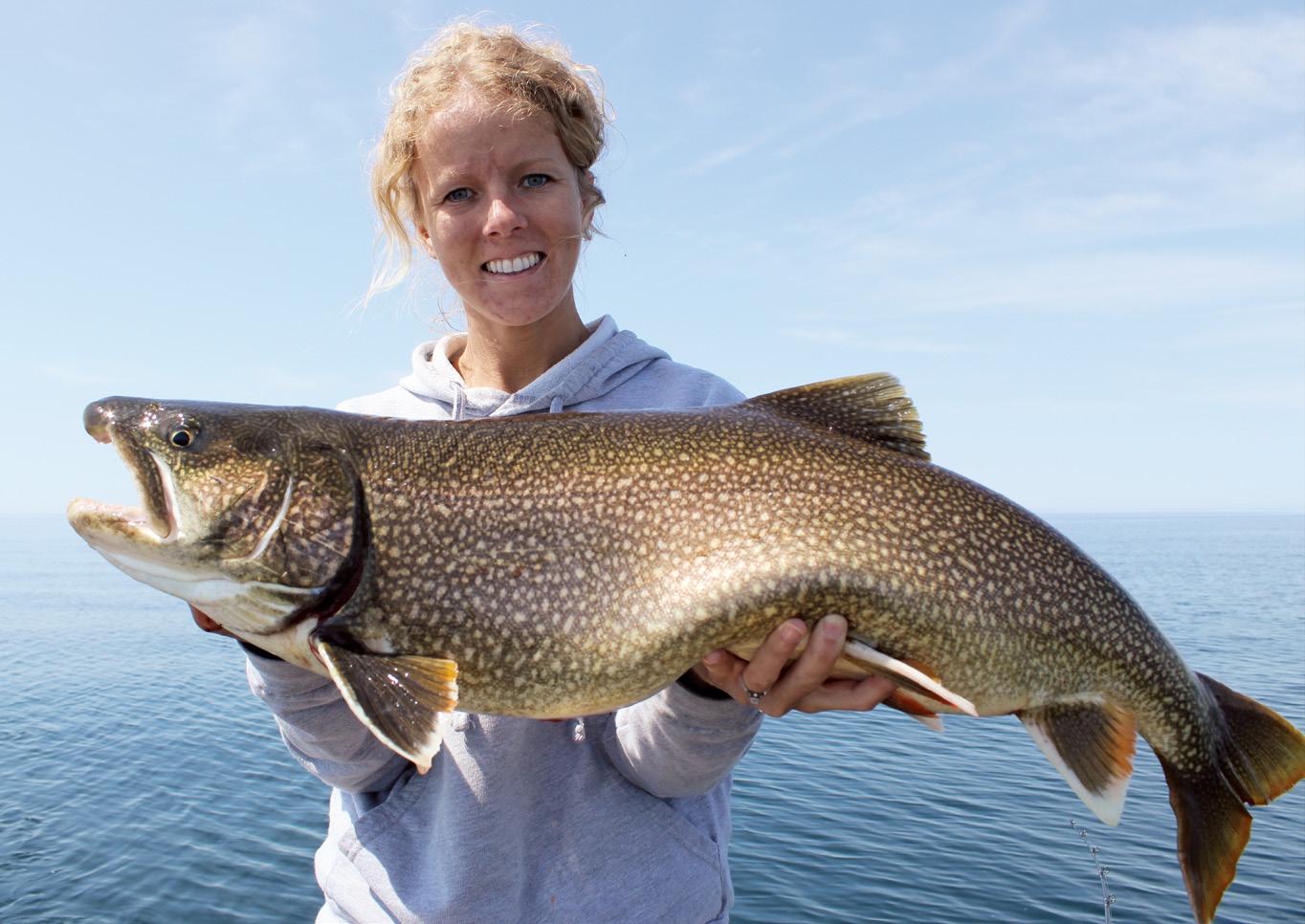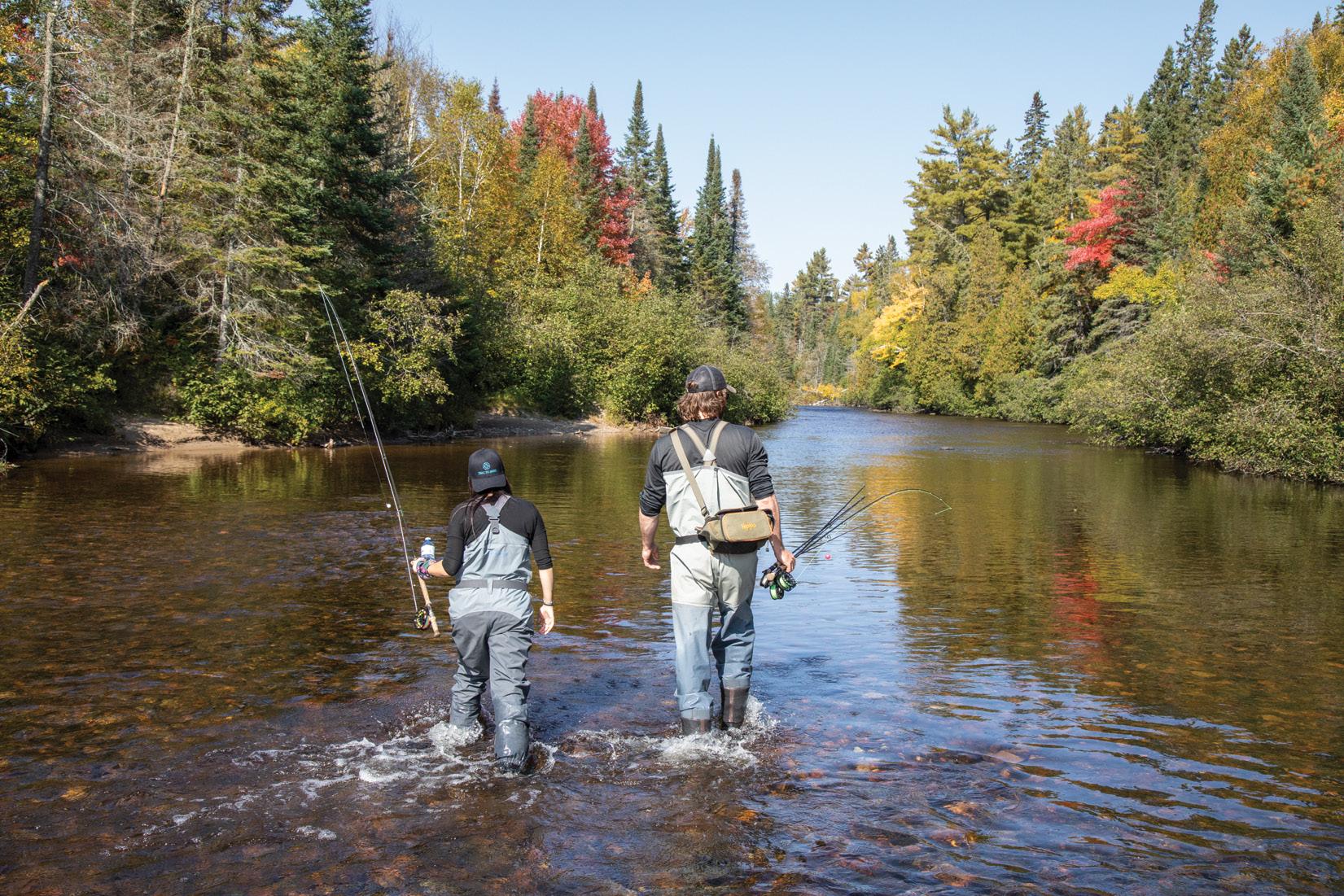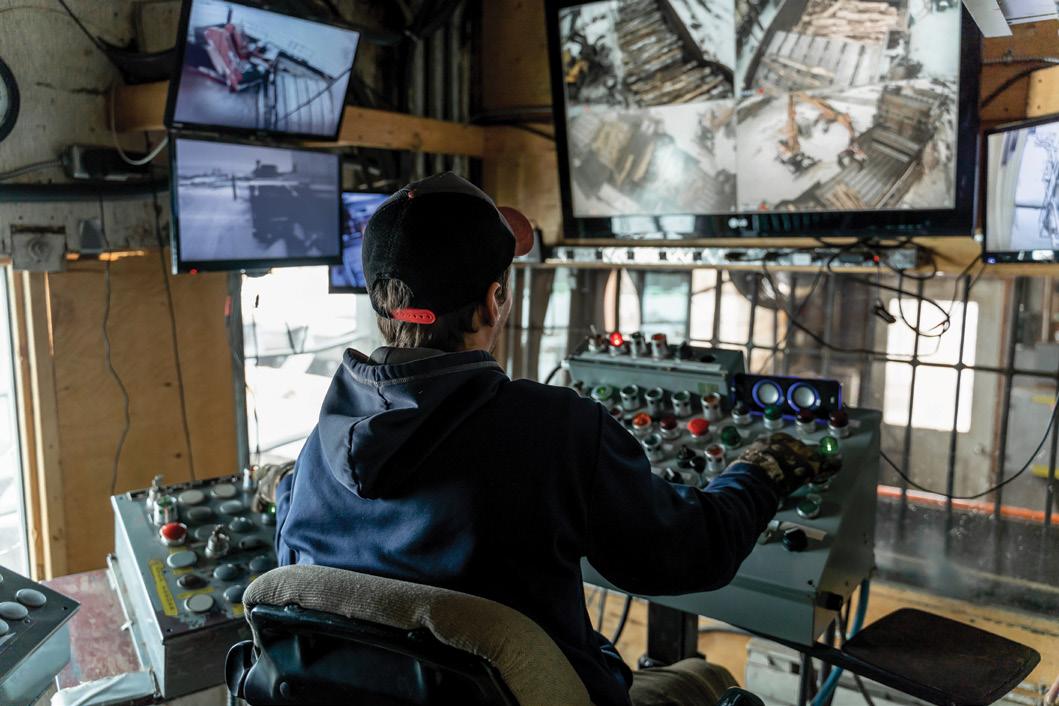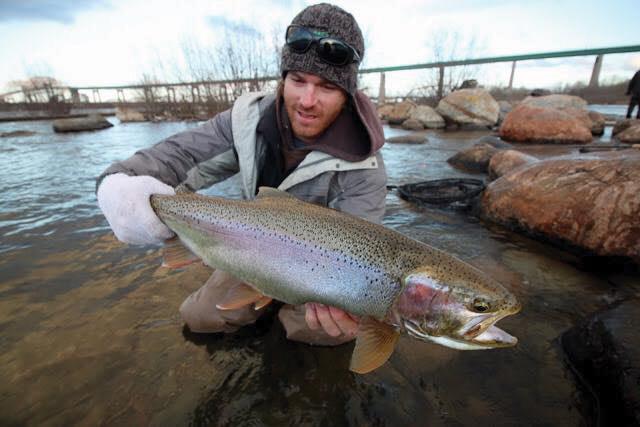
3 minute read
On the mark
FORGET TROLLING. SPOTTING, STALKING AND SNIPING IS MORE EFFECTIVE
NOT THAT LONG ago, if I were looking for a school of lake trout or walleye, the odds were good I’d troll to find them. And once I found the fish, I’d weave around them if they were spread out, stopping to cast only if they were concentrated. How quickly things have changed. Over the past few years, my trolling frequency has dropped like a lead downrigger cannonball. Instead, I now spot, stalk and snipe the fish. Why? Not only is this technique much more efficient and effective, it’s also a lot more fun.
Advertisement
Sniping Lakers
To help you understand why I changed strategies, imagine you’re with me trolling for lakers, puttering across an expanse of open water—or around a hardbottomed feature—at a relatively slow speed. When the sonar unit marks a fish 20 feet up off the bottom in 65 feet of water, we keep advancing because our lines are trailing behind the boat. At that point, all we can do is hope the trout will spot one of our lures when they catch up, then follow it and strike. If that doesn’t happen, we’ll slowly swing the boat around, retrace our path and zigzag over the same spot, again hoping for a hit. It’s a tried-and-true plan, but consider this alternative.
We’re on the same lake with the same fish in the same location, but this time we’re moving two to four times faster, watching our sonar unit like hawks. I’m driving, and you’re at the ready to snipe, holding a rod rigged with a heavy tube jig, spoon or Jigging Rap-style lure. Now when we spot the trout on the sonar, I pop the throttle into reverse and back up over the fish. At the same time, you open the bail on your spinning reel and let the lure plummet straight down. The trout sees it falling, rockets up and engulfs it before I’ve even popped the motor into neutral.
This tactic is frighteningly effective because you’re in total control of your lure—it isn’t just somewhere behind the boat. And because the boat has backed up over the trout, you can watch on the sonar screen how the fish behaves, then react accordingly. If the trout sits tight and doesn’t race up to intercept the lure, for example, I like to stop the lure a few feet above the fish’s head, making it act like a startled cisco or smelt getting ready to flee. The trout then can’t resist the subsequent panic-stricken flight of your bait, and you can watch all the action unfold on your sonar screen.
As a bonus, for this tactic there’s no need for downriggers, leadcore line or other trolling systems that require special equipment. In fact, you likely already have everything you need—a medium- or mediumheavy rod, and a reel spooled with 10- to 12-pound line. A chartplotter is obviously also required, but most anglers have at least a basic model these days. And when you have two people in the boat, you can both get in on the action by switching driver and sniper positions after every couple of fish.
Sniping Bottom Feeders
Targeting bottom-dwelling walleye, as well as black crappies and yellow perch, is even more fun because they’re often schooled up, giving you more fish to target. Here I like to cruise at approximately nine to 12 kilometres an hour, slowing down when I’m weaving over high-percentage structure. I also like to keep my sonar unit on split-screen mode, showing either down-scan and sidescan views, 2D and down-scan, or 2D and zoom.
My favourite way to snipe big walleye—especially when I’m targeting one or two specific fish—is a technique called “power-corking.” For this, add a bobber stop to 10- to 12-pound gel-spun line, then slide on a big slip bobber (I use pike floats). Next add a heavy 3⁄8- to 5 8-ounce sliding tungsten sinker, a barrel swivel, and an 18-inch, eight-pound mono or fluoro leader. Complete the rig with your favourite 1⁄8- to 3⁄16-ounce walleye jig tipped with a leech or half a nightcrawler.
Although you’re using a slip float for this technique, it’s not finesse fishing. Rather, it’s a pure reaction bite. Once you see a walleye on your sonar screen, back up and flip the rig under the transducer. When the bobber hits the stop—the depth doesn’t have to be precise, as long as the jig is just above the fish—hold on and get ready for a big strike. Then spot, stalk, snipe and repeat. OC






BY SCOTT GARDNER
BY SCOTT GARDNER










